c.1927 Victoria Harbour
Primary tabs
Where: I'm curious to know where the photographer stood to take this photo. The buildings in the foreground will help us work that out.
| London lunchtime meetup, 21st Feb. Click for details. |
The building closest to the camera is the one with three domes decorating the front of it.
I don't recognise that building, but the group at the bottom of the hill are more familiar. This terrace of buildings was near the start of Queen's Road East.
They would be similar to the buildings seen in this street-level view.
Left from the terrace is a building with a flat roof.
It was on the corner of Queen's Road East and Arsenal Street, and was a famous Japanese store known as Daibutsu.
Next round from Daibutsu was another short terrace of buildings.
Then we come to the corner of Arsenal Street and the old Praya, where the Methodist Soldiers' and Sailors' Home stood.
Older photos show that before the reclamation project started, it used to stand on the seafront.
The last buildings in this cluster stood next to the Home, and were known as the Blue Buildings.
Now let's use them to work out where that building with the domes was located. Look back at the main photo, and you'll see you can draw a straight line from the domes, through the Methodist Home, to Holt's Wharf over in Tsim Sha Tsui.
Draw that line on a map, and it suggests the building with the domes was somewhere around today's Monmouth Terrace.
If you can give a more accurate location, or even better identify that building, please let us know!
What: Look left from the buildings on Arsenal street, and you'll see a high wall. The land between Central and Wanchai belonged to the British army and navy, and the wall marked its eastern boundary. The area to the left of the wall was known as the Arsenal Yard.
I've highlighted a few items in the Arsenal Yard that caught my eye. First, in red we have two pylons and the lower terminus of the Navy's aerial ropeway, or cable car. It carried material between this terminus on the seafront, and the Navy's magazine and laboratory which were both up the hill near Kennedy Road.
In blue I've marked the railway lines I can see. I don't think they were for steam engines. Instead I guess they were used with small trolleys that were pushed by hand, very much like these trolleys we've seen over at the Kowloon Wharves.
What about the items marked in green? Here's a closer look.
They look like gun barrels. Is that something the Navy would keep a supply of?
Looking right from Arsenal Street we can see the reclamation underway.
Running along the edge of the reclamation there are more railway lines, but these did carry steam trains, pulling side-tipping wagons like the ones below, filled with earth and rocks.
It makes sense for the lines to run near the water's edge, so the wagons could be emptied out into the sea to extend the reclamation. They'd need to keep at that until the reclamation reached the new sea wall, shown under construction in the main photo.
Who: Lots of sailors, as is usually the case for an old photo of Hong Kong's harbour. I've got several questions about their ships, which I hope you can help me with.
Looking at the sailing ships first, I can see plenty of Chinese junks but also a Western yacht.
The local waters also saw a hybrid of eastern and western designs known as a lorcha, that used Chinese-style sails on a Western-style hull. Is that what we see here?
Then let's look at the larger ships in the harbour, starting with the largest. It has a very distinctive shape, with a flat top and no funnels in sight. It was named HMS Argus, and was one of Britain's early aircraft carriers.
The other big ships have light-coloured hulls, and also look to belong to the Royal Navy. Left of the Argus is this ship, with what looks like "C75" on the hull.
Closer to the shore is another line of ships. Starting from the left we see this one, that doesn't have any identification:
Then there's this pair of identical ships, the closer one clearly marked "H31".
Another clearly marked ship, "D58".
And finally, another one without markings.
Those letters and numbers on the side of a ship form its pennant number. If we know a ship's pennant number and the year (late 1920s, based on the reclamation), a quick search on Google will usually identify it. Except...
- C.75: I can find an HMS Leander, but that wasn't commissioned until 1931, so it can't be the ship shown here.
- H.31: HMS H31 was commissioned in 1919 and survived until WW2. That all sounds good, til you read that it was a submarine!
- D58: There was an HMS Cardiff with this pennant number in the 1920s, but the summary I linked to says it spent all of the late 1920s in the Mediterranean.
No matches there - hopefully you can see what I'm doing wrong, and point me in the right direction to identify these ships.
When: Let's see if I can do any better at finding the photo's date.
The Blue Buildings will help, as though we only see two of them in this photo, they were originally four, identical buildings.
The demolition of the two on the left was reported in the newspapers for November 1926, so we know that the main photo can't be older than that. And the sea wall for the Wanchai reclamation was finished in May 1929, so the photo won't be newer than that.
The photo is on the front of a postcard. Turning it over, we can see the writer dates their note to the 2nd June 1928, so that further shrinks the range of possible dates.
The aircraft carrier Argus is our last clue, as its movements were reported in the local newspapers. It sailed from the UK in early 1927, arriving in Hong Kong in March 1927 on its way to Shanghai. It made several more visits to Hong Kong, before setting off on the return journey to the UK in March 1928.
The photo must have been taken between March 1927 and March 1928 to catch the Argus in Hong Kong. I'll pick 1st August 1927 as a date roughly in the middle of the range, and also a date when the papers reported one of Argus's visits.
If you can put a more accurate date on this view, please let us know in the comments below.
Gwulo photo ID: K152
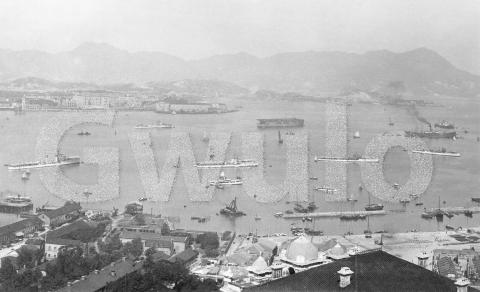


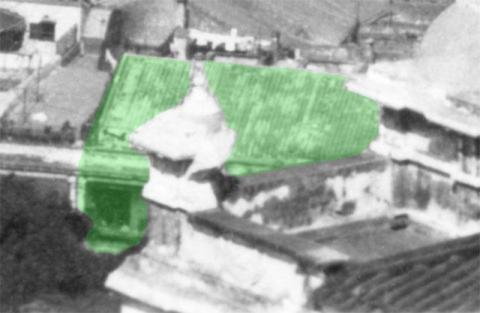
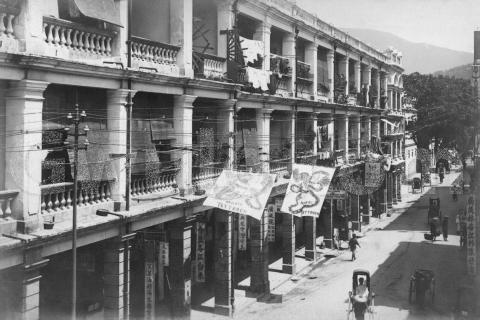
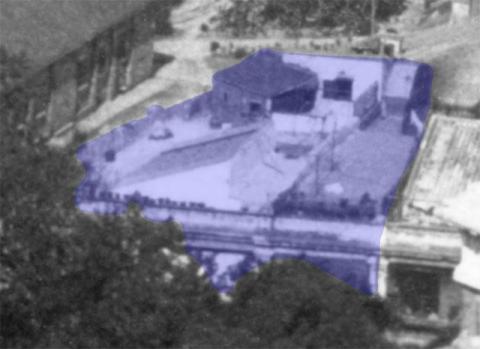
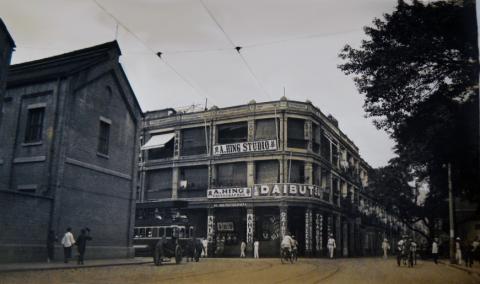
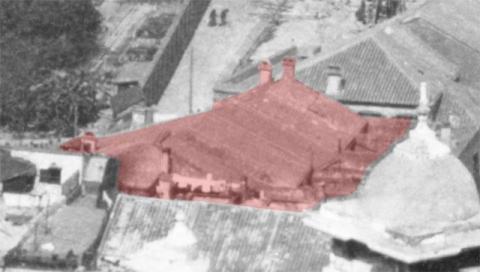
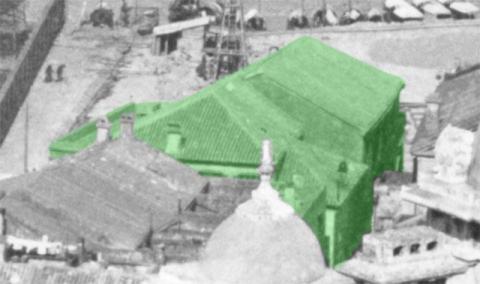



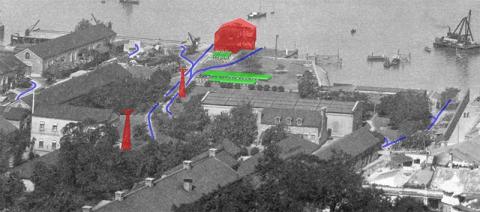
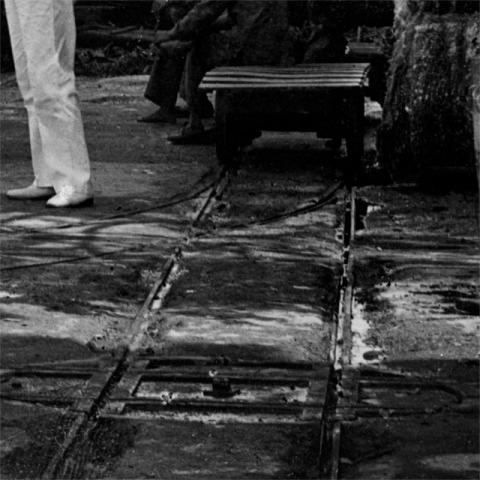
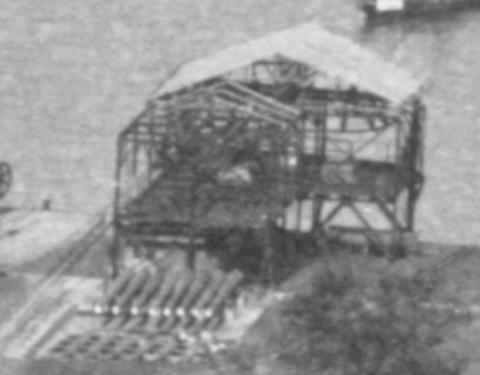
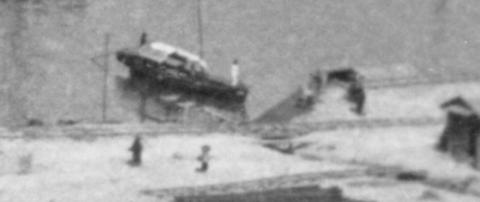
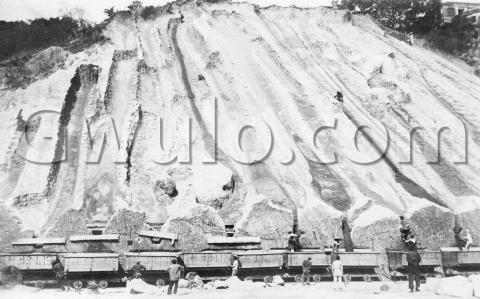

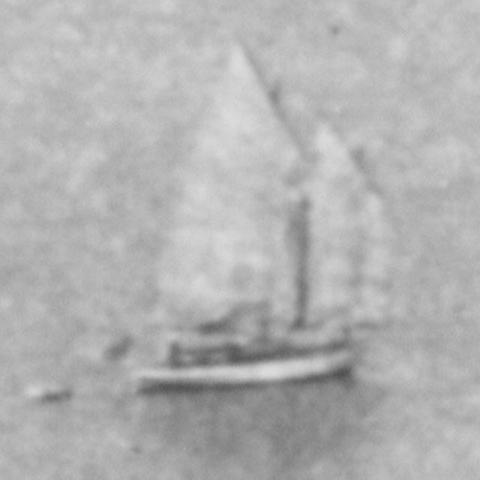
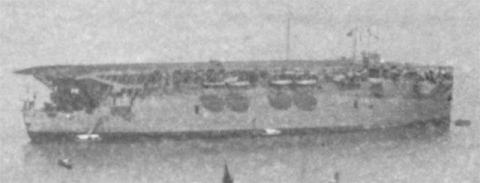
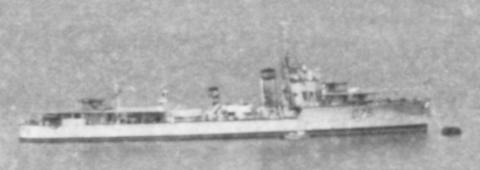
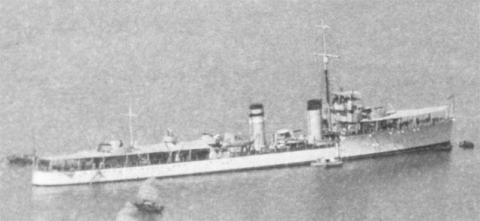
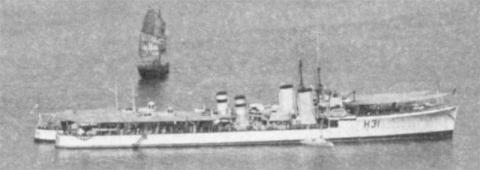

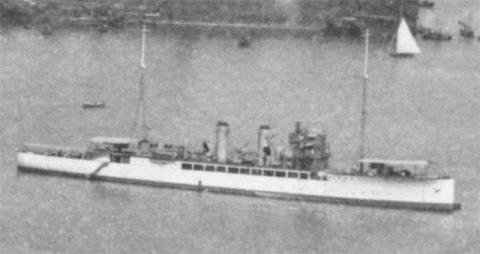
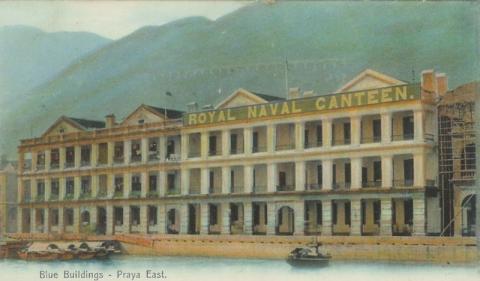
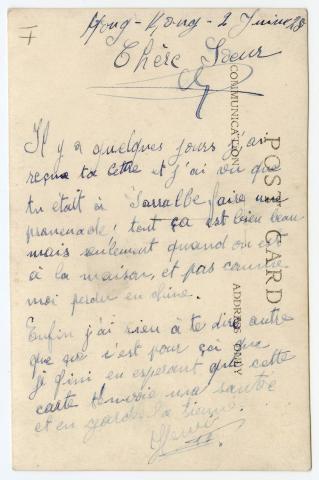


Comments
Re: Date
When compared to this photo here of the port visit made by Japanese naval vessels in April 1928, the reclamation works towards the Naval Yard are at a more advanced stage. Thus, your date of around August 1927 looks good.
I have not gone through the list of boats in the photo and their pennant numbers. But I think "H31" may be the destroyers from the Eighth Destroyer Flotilla Group e.g. HMS Sterling which arrived in Hong Kong on 24 March 1927. The Argus left Hong Kong 23 March and did not return until 31 July1927, so this period of time does not match.
Could you also enlarge the ground floor of the Peninsula Hotel? Thanks.
HMS Argus 1927
Ships
Very tricky to identify ships. ("I make no claim to understand the intricacies of pendant numbers - Gordon Smith, Naval-History.Net")
What I found is some information on the D-class cruiser HMS Durban that was based in Hong Kong between January 1927 - April 1928 (see here)
Domed House
The domed house was on the south side of Kennedy Road. I have created a place for it here. I am unsure of its exact construction date but the 1st decade of the 20th century seems likely due to the style of the building. The building/lot was removed when Kennedy Road was straightened c1950
The picture was probably taken from the Bowen Road Filter Beds bungalow.
Edit: The 1914 PWD report puts the completion date as 1914
Re: Domed Building
I think the domed building can be seen on the upper left of the Soldiers and Sailors Home.
Thanks for the feedback on
Thanks for the feedback on this one. Here's the zoom in on the Peninsula as requested:
Re: Peninsula Hotel
The presence of the temporary structure (garage) in the forecourt of the Hotel also indicates that the photo was taken around 1927 as seen here
Building next to Daibatsu
c.1927 Victoria Harbour
Gun Park:
Most naval ordnance yards had gun parks of the kind shown. There is a splendid Aussie website that shows how stuff was operated: http://users.tpg.com.au/borclaud/ranad/about_spectacle.html (it has another page on another part of the site showing 15” guns being stored at a gun park on Cockatoo Island). My suspicion here is that we are looking at serried ranks of the older 6”/45 BL Mk VII, that were the mainstay of the coastal defence weaponry but were being superseded by the 6”50 Mks IX through XXIII. An alternative is possibly the 4.7”/45 Mks I & II used in most destroyers, inter alia or 4”/40 in smaller destroyers, but they possibly look too large. All 16 in the stack look like the same model. Not sure what the nearer ones are except, it would seem, possibly larger caliber.
Ships
Pre-1910: the smallest craft like TBDs (Torpedo boat destroyers) often had a class letter on their hulls, the class letter would seem to have been fairly arbitrary and not clearly related to anything like the actual names of the vessels
1910-1914: The use of pennant numbers in addition to class letters increases – for example destroyers were numbers in classes A to M, but is not regular or regulated. Class letters are sometimes replaced by divisional port (Portsmouth – P; Devonport – D; and Nore (Chatham) – N). There were also examples of two letter prefatory letters. There was no consistency
1914-1920: the state of affairs in 1914 persists, but with some tendency to rationalization. Throughout the period and on until c.1924 ships could and did have their pennant numbers changed, often as a consequence of the attempts at rationalization.
1920-1935: still a bit of a dog’s breakfast but as of 1924 clear efforts were being made to sort out the muddle. Although all vessels acquired pennant numbers for flag and radio signaling purposes (D & H for older destroyers, G & F for new classes, N for survey ships, T for river gunboats, I for some cruiser classes – submarines had their own weird systems and carriers and capital ships used numeric pennant numbers only), only small vessels had their pennant numbers painted on the bows.
1935-1940: the build-up before WW2 introduced new classes. Destroyer letters stayed D, H, G and F with L for the new escorts and patrol sloops until, with the introduction of the Flower class corvettes, K (after a brief play with M) was added for them.
1940-45:
- Destroyers: replaced D & F with I and G plus, as of 1943, R for new fleet destroyers. Submarines (flag and radio only) N and P.
- Escorts U replaced L.
- Lend lease ex-US coastguard vessels Y and 5Y.
- Minesweepers J, though not for minesweeping auxiliaries like taken up for service trawlers, which were a law unto themselves
- Escort carriers: D
- Coastal forces: MGBs/MTBs S; MLs Q
- Landing ships: mostly F and some A
Post-1945: the modern system emerged.
OK, your ships. This is a bit of a nightmare because A. the late 1920s were a major flexion point in numbering and ships; B. there were lots of design variants between classes depending on builder; C. no one ever seems to have kept any sort of systematic record:
You have two more very small naval vessels close inshore by the outer wall of the Praya East Reclamation – the zoom resolution and copyright overlay makes any further ident impossible.
Hope that helps, though probably not with the dating where we have a chicken and egg – with a closer date we can zero in on the vessels or, with more clearly identified vessels, we can zero in on the date. All I’d hazard is that given this many escorts in harbour at the escort anchorage end of the naval anchorage (i.e. the two lines of buoys off Wanchai) but with all the larger vessels on their moorings off the naval dockyard or alongside the north mole or north wall, so out of sight, we’re probably in autumn/winter/early spring, otherwise the fleet would have been in Weiheiwei.
Best,
Stephen
Identifying the ships
Cornflower is on buoy No. 10 with C5 – one of the Harbour Master’s Dept buoys, to the north with, beyond it, Harbour Master’s buoy B25. We can see C5 in this pic with a general cargo steamer either loading or discharging on it, her funnel smoking badly. Beyond her is a smaller vessel on B25 I think.
The Argus is on naval anchorage buoy No. 1 or No. 2 – I think the former – which by this point had become the carrier buoy. Argus was in town because she was deputing for the Hermes while the latter was having a refit. That makes the singleton destroyer left of Cornflower on No. 11, the doublet on No. 12 and the flotilla leader on No.13.
The oddity further north, to the left of Argus, looks like she’s on No. 2 (you can see untenanted buoys of the middle naval trot in between the destroyers and the oddity). That leads me to wonder, given the difficulty I have finding a match for the silhouette, whether she might not be RN. Trouble is she doesn’t fit any Italian, French, Spanish or USN types either! She does have two very sharp diagnostics that distinguish her from the vessels of the 8th DF (see next para). She has a sloping hance (the step down from the forecastle to the aft sheerline) and she has two guns forward, traditionally A and B, neither with shields (so probably 4”/40 QF Mk IV) and one superfiring over the other. That makes her a V or W class of WW1 vintage, not part of 8th DF. She also has a sub-division leader’s black stripe around her fore-funnel but does not appear to have 8DF’s black over white on her aft funnel. More work needed.
You’ll have grasped that I have a solution of a kind for the destroyers. In 1927-31 the resident China Station destroyer flotilla was 8th Destroyer Flotilla. We have all the names which are: Bruce [Leader], Sepoy, Seraph, Serapis, Sirdar, Somme, Stormcloud, Sterling & Thracian. The Bruce was indeed an Admiralty type DL, so there’s one identification – the leftmost vessel is the Bruce.
Of the whole of 8th DF we only have four out of nine vessels. A flotilla was nine vessels divided into a leader and two sub-divisions of four, each sub-division further divided into sub-sub-divisions of two. So what we have here is the DL, the Bruce (either Captain Reginald V. Holt, 13 September, 1926 – 4 January, 1927 or Captain William P. Mark-Wardlaw, who was the next Capt D, 8DF) plus a sub-division possibly minus one of its number (off doing something like being docked, having its compass swung, routine exercise schedule, etc.), supposing the odd-man-out on No.2 is, as I suspect, not part of 8th DF. The Bruce has the flotilla leader’s black-topped fore funnel and I suspect what is the 8th DF’s own identifier, the black over white stripes on the aft funnel, shared with all the destroyers we can see except, I think, the odd one out.
The post 1922 pennant numbers of the ships in 8th DF were: Sepoy D03, Seraph D04, Serapis D58, Sirdar D59, Somme D07, Stormcloud H05, Sterling H31 and Thracian D86.
So, the closest of the pair is HMS Sterling (possibly Lieutenant-Commander Stephen H. T. Arliss) and D58 is the Serapis (Commander Percy R. P. Percival I think). You’ll notice that D58 has a stripe on her forward funnel and two on her aft funnel. that means she’s a sub-div leader, hence a Commander as a skipper, not a two-and-a-half.
The stripes on the aft funnel are the flotilla markers – you’ll see that D58 and both destroyers in the H31 pair as well as the DL (the Bruce) all have black over white (D58 is being a bit toplofty with buff rather than grey funnels (stuff was changing but skippers had some discretion, so snobs kept to the older, buff funnel routine)). So what we have are three ships of one sub-div, the fourth as suggested, off for the day (which, with a bit of newspaper sleuthing, might tie down a date) and the DL. Goodness knows where the other sub-div was – a scan of the newspapers would probably tell us.
Best, Stephen
PS A quick and dirty search at least led to one clear conclusion. 8th DF did not leave Blighty for HK until February 1927 and arrived in HK on 25th March. By the time they arrived the Argus had thinned out to Shanghai because of ructions there, having left HK on 23rd March. The very patchy coverage for the rest of 1927 is not helpful. The Argus and 8DF arrived in HK together on 12th March. There seems then to have been much toing and froing, but no record has all the vessels in the right spots at the right moment. The nearest I have found would seem to be some time in early 1928 but it is very uncertain.
re: c.1927 Victoria Harbour
Thanks Stephen, that's a very comprehensive souple of replies, and an educational read.
I took a quick look for flotilla in the online newspapers but the only mention of the 8th Destroyer Flotilla was of their initial arrival in Hong Kong in March 1927. The Argus had already left Hong Kong by then, so that date wouldn't be a match for this photo.
One other result was a mention of the 3rd Destroyer Flotilla, and how it had also been on the China Station at this time. Perhaps one of these ships was the mystery ship above?
Page 11, The Hong Kong Telegraph, 1928-07-09:
THIRD FLOTILLA STARTS ON HOMEWARD TRIP
Led by H.M.S. Keppel, the 3rd Destroyer Flotilla left Hongkong about ten o'clock yesterday morning for Home. The Flotilla, in addition to the leader Keppel, consists of H.M. Ships Wishart, Verity, Veteran, Wanderer, Witherington, Wild Swan Wivern and Wolverine, and leaves the China Station after a period of twenty one months.
The destroys were ordered from Home on September 22, 1926, in view of the developments in the China situation. At the same time four additional cruisers were sent out to join the Squadron. The destroyers arrived In Hongkong on October 15, 1926, sailing almost immediately for the North.
Yesterday morning they flew the paying off pennant and steamed out in line through Lyemun.
H.M.S. Curlew, which was detached from the 3rd Cruiser Squadron, leaves for Home this morning prior to rejoining the Mediterranean Fleet. H.M.S. Carlisle of the 5th Squadron, which came down from Hankow a few days ago, is sailing for Home on Friday, her place being taken by the now cruiser H.M.S, Suffolk.
I'll follow up with another search for the individual ships of the 8DF in the newspapers.
Newspaper mentions
Online searches for mentions of the following ships between March 1927-March 1928:
destroyers
David,
Excellent - I'd missed 3DF. Supernumerary add-ons often get left out of disposition lists. Problem is that although it confirms what I'd suspected, that some V & Ws, including the modified variant with the very small aft funnel, were around, accounting for the odd man out on the far trot, it just adds confusion.
There are two elements to this. The first you'll have hoisted aboard by now, which is that 'C' was not a prefix letter for destroyers and this is without question a destroyer. The second problem is that '75' is not a number of any destroyer in 3DF which were:
Keppel D84
Wishart D67
Verity F36/D63
Veteran D72
Wanderer D74
Witherington D76
Wild Swan D62
Wivern D66
Wolverine D78
It's possible we're seeing either Wolverine (75/78 with fuzzy res, though D and C are hard to confuse!) or Witherington. Both have the right profile as modified Ws, though don't yet know which was a sub-div leader.
StephenD
Re: Newspaper Mentions
A valuable source of information of HMS vessels and foreign warships in port can be gleaned in the shipping section of the Hong Kong Daily Press as seen here. Scroll to Page 11.
The dates of the HMS Argus cruise of 1927-1928 can also be seen below
When the Argus was in the harbour, it always at Naval Anchorage Buoy No. 1
The first visit between 12 and 23 March 1927 was a short one. The Argus visit does not match the arrival of the 8th Destroyer Flotilla Group on 24 March 1927 (HK Telegraph 25 March 1927 refers) which included destroyers that have been identified to be the Sterling (H31) and Serapis (D58).
I had looked at the second port visit between 31 July and 31 August 1927 but cannot find the right combination of vessels and mooring buoys to match the photo. For information during the visit, the Argus was in dock between 7 and 12 August.
So that leaves the final visit which was a lengthy one from 6 November 1927 to 20 March 1928. I initially looked around Armistice Day 1927. I noted here (scroll to page 11) on 11 November that Argus (No. 1 Buoy), Witherington (No. 2 Buoy), Serapis (No. 11 Buoy), Bruce (No. 13 Buoy) were at their respective buoys but there is no sign of the Sterling with another destroyer at No. 11 Buoy.
Unfortunately, there is no information for warships in port for 12 and 13 November.
I noted here (scroll to page 11) on 14 November that Argus (No.1 Buoy), Magnolia (No. 10 Buoy) Serapis (No. 11 Buoy), Sterling and Stormcloud (No. 12 Buoy), Bruce (No. 13 Buoy) were at their respective buoys and Witherington had recently gone into dock at Taikoo.
I am not sure if the training ship in the photo could be one of the Acacia Class sloops e.g. Magnolia at Buoy No. 10. After looking at the entire final visit, except for the period in mid November 1927, I cannot find the right combination of vessels and mooring buoys to match the photo.
For information, the Argus was at the North Arm of the Dockyard from 5 December 1927 to 16 January 1928, at sea between 20 and 25 February, at Taikoo Dock from 28 February till 1 March and at Kowloon Dock on 8 March. With the arrival of the Hermes on 19 March, the Argus was relieved and left for Home on 20 March 1928.
HMS Durban
As posted earlier, I'd like to draw the attention to another vessel and squadron. It's HMS Durban.
SAILING FOR HONG KONG
1927
BASED AT HONG KONG
January 1927 - April 1928
1928
CHINESE WATERS - continued
Additionally, a photo (from that time?) is posted:
Hong Kong from the Peak, Kowloon in distance, cruiser alongside in foreground (believed carrier Hermes on right)
Re: HMS Durban
Thanks Klaus. Given the dates of Durban that have been provided and the cruise dates of the Argus, Durban was in port between 6 and 18 November 1927 when Argus was at the No. 1 Buoy.
The Durban was at the following berthing/mooring locations in the harbour:
6-8 Nov - West Wall Dock
9-10 Nov - No. 7 Buoy
11 Nov - West Wall Dock
12-13 Nov - No newspaper information
14 Nov - North Wall Basin
15 Nov - No. 7 Buoy
16-17 Nov - Not listed. Assumed at sea.
18 Nov - No. 3 Buoy
No. 7 Buoy appears to be be located further west. That said, it is noted on 15 November as viewed here (scroll to Page 13) that Argus (No.1 Buoy), Magnolia (No. 10 Buoy) Serapis (No. 11 Buoy), Sterling and Stormcloud (No. 12 Buoy), Bruce (No. 13 Buoy) were at their respective buoys and Witherington had gone into dock at Taikoo. However, the vessel at No. 2 buoy is not listed.
1927 Harbour Mooring Buoys
ship idents
In Klaus' second photo here, the ship alongside the North Mole is HMS Ambrose, depot ship to the 4th Submarine Flotilla (replaced by HMS Medway, the RN's first purpose designed and built depot ship, on 9.8.1930). The Ambrose and Titania were both around looking after 4SM in the 1920s and you can see the Titania out on Naval No. 4. The Ambrose left on 27th March 1928 with Ls 1, 2, 4, 5, 7, and 8. The Titania left with her L boats on 12 Feb 1929, getting back to Sheerness on 16th Jan 1930. The 'jizz' of the two ships is very different and one cannot be mistaken for the other - basically Ambrose with the fat funnel, Titania with the skinny one...though the superstructures and bows are equally distinctive.
So, with jizz, the light cruisers of the C and D classes are distinctive, especially the later Cs and the Ds which, because the first lots had been decidedly wet at speed in a seaway, had the sweetly raised forecastle with its pronounced sheer, marked overhang and pronounced knuckle. (I know these beauties well because my father was chaplain of Despatch 1939-1941 and I've looked at her photo (entering Castries, St Lucia in October 1939} every year of my life since I can remember!) So whilst Durban is interesting, as David says, she was not on the buoys in view in the 1927 photo. More to the point if a cruiser had an initial letter to its pennant number - most didn't - it would have been 'I' and in any case it was not painted on the bows, only used in flag and radio coms. With Hermes in the pic, this must be post-late March 1928 or pre-March 1927 - the latter a narrow window.
So Durban isn't in David's 1927 photo - there is no cruiser and the odd bod out on the furthermost north buoy trot (I've been looking at a late 1930s chart - so thanks Moddsey for the 1927 layout which preceded the extension of the naval mooring area eastwards) is unquestionably a destroyer and of the modified W class. Thanks too Moddsey for reminding me that there was more than one of the old Acacias/Arabis class (aka the Cabbage Class or Herbaceous Borders) in HK in the interwar period (the Magnolia arr 12/6/1920 and left on 3/11/1931 for UK where she was sold for scrapping in 1932 - she arrived with Hollyhock, Foxglove, and Bluebell plus the cruiser Colombo and five river gunboats) - so scrub round Cornflower, which replaced the Hollyhock in March 1928, so wouldn't be in this photo.
The bally papers are very in and out with lists of what naval ship is where, but IDJ's excellent summary diagram of the Argus' commission suggests, as Moddsey says, a date in the carrier's final visit between 6 November 1927 and 20th March 1928, but in default of some other source, it seems a bit arbitrary to say anything other than that the photo must have been taken between the date 6/11-5/12/1927, 16/1-20/2/1928 or 8/3-19/3/1929.
That said, the very close fit on 14th Nov is suggestive. Interestingly the fit is worse on 12th and 15th and for some errant reason it appears that no copies of newspapers for 13th November appear to exist online!
StephenD
The domed building in this
The domed building in this picture looklike the Ngan's family residence on 64 Kennedy road but the building in question had three domed structures instead of one.
Domed building above Kennedy Road
Since we say that the image was taken from the Waterworks at Bowen Drive, then the building is between the filterbeds and Admiralty, probably IL. 1890.
The building we're looking for, has a dome in the center, domes on either side, but not on the corners. I've posted a fuzzy picture of the Waterworks showing the building I think it is, but it's not clear enough to be sure. It's to the left of the 3 filter beds and below.
Domed Building found
And I've found it, there's a clear version in this picture of the Cable Railway
https://gwulo.com/atom/16033
re: Domed Building found
Thanks for the clear photo of that building.
Herostratus has also added some information about its location and why we don't see it any more: https://gwulo.com/node/40294
Destroyer Identification
8th DF was set up in Hong Kong in 1927 and 3rd DF was sent to Far East for Nanking incident in the same year. So all the 8 destroyers and 1 destroyer leader from both of the DF did meet in Hong Kong in 1927 to 1928 (there is a very clear photo taken in 192 For 8th, the destroyer leader is HMS Bruse with 8 S-class. For 3rd DF, the destroyer leader is HMS Keppa with 8 V&W class (including modified Ws). It could be obviously seen from the photo that S-class and V&W class appear together which reflects the photos must be taken in 1927 to 1928 matching with the visiting period of HMS Argus in the photo.
Those ships of 3rd DF carried 3 black strips at their aft funnel but those of 8th DF carried one black top and one white bottom strip at aft funnel. As Stephen said, the 8 destroyers were divided into two sub-divisions. The two sub-divisions of the DF could be distinguished by a black strip at the first funnel. For destroyer leaders, the first funnel would be painted with thick black top.
So we could easily identify the ship without pennant number but with one black and one white strip at aft funnel and the thick black top at first funnel is HMS Bruce from 8th DF.
For those two ships with H31 and D58 who carried one black and one white strip at aft funnel are the S-class from 8th DF. H31 is HMS Sterling and D58 is HMS Serapis of other sub-division who carried black strip at first funnel.
The ship of pennant number "C75", as Stephen said, is wrong and she is an Admiralty modified W-class (2nd batch). She may be D76 HMS Witherington or D78 HMS Wolverine. The aft funnel only had two black strips but the third one might be hidden by the deck fittings. According to historical photos, which easily searched by Google, that ship may be D76 HMS Witherington as she carried a black strip at first funnel (but not for D78 HMS Wolverine).
Thomas Chan